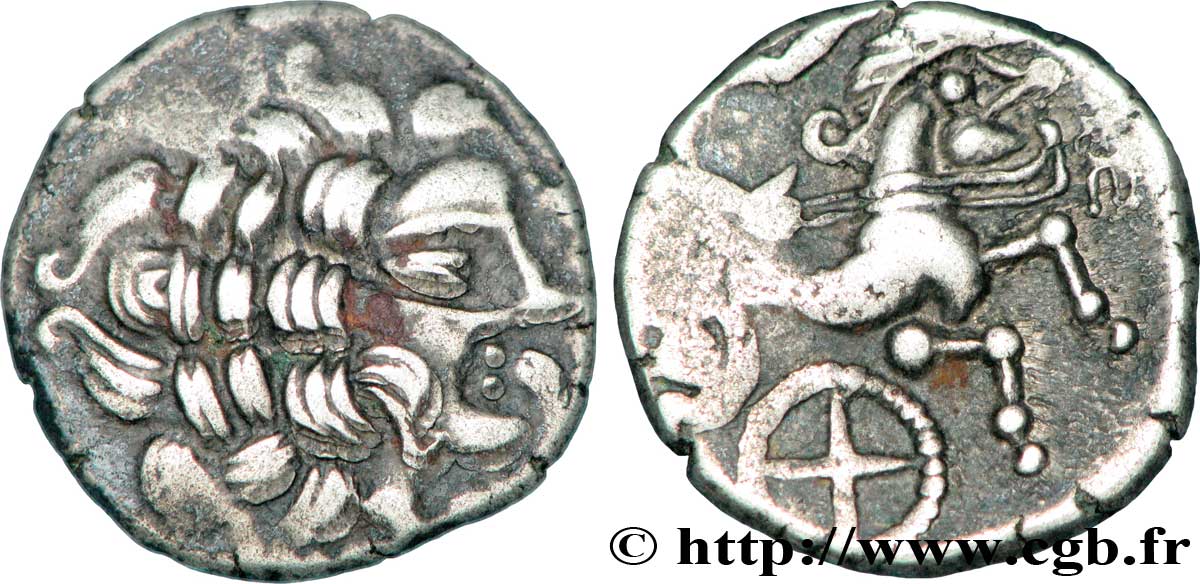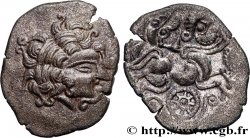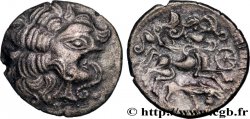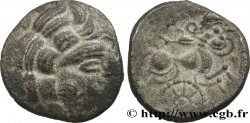v57_0447 - REDONES (Area of Rennes) Statère de billon, classe IV
MONNAIES 57 (2013)
Starting price : 700.00 €
Estimate : 1 200.00 €
Realised price : 745.00 €
Number of bids : 2
Maximum bid : 1 460.00 €
Starting price : 700.00 €
Estimate : 1 200.00 €
Realised price : 745.00 €
Number of bids : 2
Maximum bid : 1 460.00 €
Type : Statère de billon, classe IV
Date: c. 80-50 AC.
Metal : billon
Diameter : 20,5 mm
Orientation dies : 3 h.
Weight : 6,65 g.
Rarity : R2
Coments on the condition:
Belle monnaie, sur un flan un peu court mais régulier, avec un avers complet et bien centré. Revers un peu décentré avec une faiblesse de frappe sur l’arrière du cheval. Agréable patine sombre et épaisse avec les reliefs plus clairs. Une légère concrétion rougeâtre est à signaler sur la joue au droit
Catalogue references :
Obverse
Obverse legend : ANÉPIGRAPHE.
Obverse description : Tête laurée à droite, la chevelure abondante ; rinceau devant la bouche.
Reverse
Reverse legend : ANÉPIGRAPHE.
Reverse description : Cheval androcéphale conduit à droite par un aurige, tenant les rênes et le fouet ; entre les pattes, rouelle à quatre rayons avec moyeu central.
Commentary
Cette monnaie est bien complète, avec une très belle chevelure mais un rinceau à peine visible devant la bouche. Au revers, la roue à quatre rayons est l’élément déterminant dans le classement de ces statères à la classe IV. Le vexillum devant l’androcéphale est en bord de flan sur cet exemplaire.








 Report a mistake
Report a mistake Print the page
Print the page Share my selection
Share my selection Ask a question
Ask a question Consign / sell
Consign / sell
 Full data
Full data









